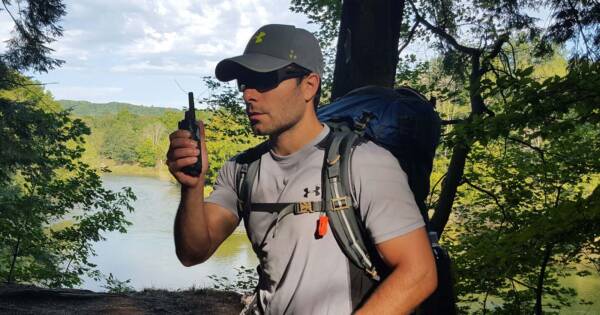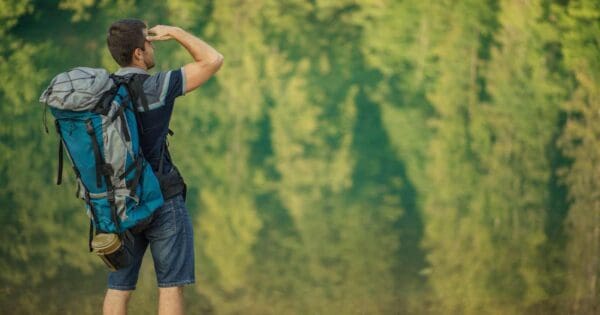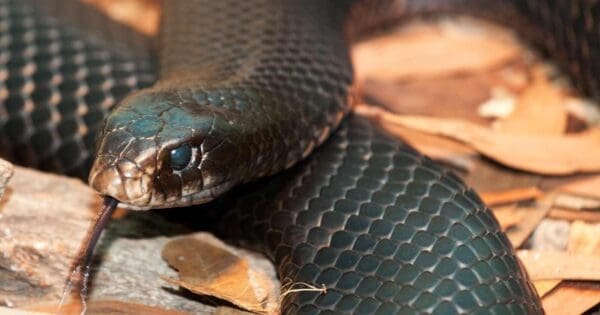Australia is home to unique and fascinating wildlife. From kangaroos and koalas to crocodiles and snakes, there is something for everyone. However, it’s important to be aware of the potential hazards of Australia’s wildlife when exploring the outdoors. Venomous snakes, cranky spiders, and massive crocodiles are just a few of the creatures that can pose a risk. By understanding these animals and how to behave in their presence, you can ensure that your Aussie adventure remains safe and enjoyable. Here’s a quick rundown on Australian wildlife to avoid when hiking.
Snakes

Australia has over 170 species of snakes, of which 25 are venomous. The most common venomous snakes found in hiking areas include tiger snakes, brown snakes, and black snakes. Snakes can be found all over Australia, but they are most common in warm, humid areas.
Snakes are ambush predators, meaning they hide and wait for their prey to come to them. They are also very good at camouflage, so it can be difficult to see them. When hiking, it is important to be aware of your surroundings and watch where you step. You should also avoid walking through thick vegetation, where snakes are more likely to be found.
If you see a snake, do not approach it. Instead, back away slowly and give it plenty of space. Snakes will not attack unless they feel threatened, so it is important to stay calm and avoid making any sudden movements.
Spiders

Australia is also home to a variety of venomous spiders, including redback spiders, funnel-web spiders, and mouse spiders. Spiders can be found all over Australia, but they are most common in dry, arid areas.
Spiders can be found in a variety of habitats, including under rocks, in logs, and in webs. When hiking, it is important to be careful where you put your hands and feet. You should also avoid wearing open-toed shoes, as this can increase your risk of being bitten.
If you are bitten by a spider, seek medical attention immediately. Spider bites can be very serious, and some species of spiders can be deadly.
Crocodiles

Crocodiles are found in the tropical north of Australia, in both fresh and saltwater. They are apex predators and can be very aggressive, especially during breeding season.
Crocodiles are ambush predators and can hide in the water, waiting for their prey to come to them. When hiking in crocodile country, it is important to stay away from water bodies, especially at night. You should also avoid swimming in any water bodies that are not crocodile-safe.
If you see a crocodile, do not approach it. Instead, back away slowly and give it plenty of space. If a crocodile charges at you, run away in a zigzag pattern. Crocodiles are fast runners, but they are not very good at turning.
Dingos

Dingos are wild dogs that are found all over Australia. They are generally shy animals, but they can become aggressive if they feel threatened, especially if they are hungry or if they have puppies.
Dingos are most likely to be encountered in remote areas, but they can also be found in urban areas. When hiking, it is important to be aware of your surroundings and watch for dingoes. You should also avoid feeding dingoes, as this can make them more likely to approach humans.
If you encounter a dingo, do not run away. Instead, stand tall and make noise to try to scare it away. If the dingo continues to approach, throw something at it or try to hit it with a stick.
Other wildlife to avoid

In addition to snakes, spiders, crocodiles, and dingoes, there are a number of other Australian wildlife that hikers should avoid. These include:
Kangaroos: Kangaroos are generally gentle animals, but they can become aggressive if they feel threatened. If you see a kangaroo, do not approach it. Instead, keep a safe distance and give it plenty of space.
Emus: Emus are also generally gentle animals, but they can become aggressive if they feel threatened. If you see an emu, do not approach it. Instead, keep a safe distance and give it plenty of space.
Cassowaries: Cassowaries are large, flightless birds that are found in the tropical rainforests of northern Australia. They are very shy and elusive animals, but they can be very dangerous if they feel threatened. Cassowaries have sharp claws and powerful legs, and they can easily kill a human. If you see a cassowary, do not approach it. Instead, back away slowly and give it plenty of space.
Wombats: Wombats are generally gentle animals, but they can become aggressive if they feel threatened. If you see a wombat, do not approach it. Instead, keep a safe distance and give it plenty of space.
Koalas: Koalas are also generally gentle animals, but they can become aggressive if they feel threatened. If you see a koala, do not approach it. Instead, keep a safe distance and give it plenty of space. Koala’s are often referred to as drop bears. While there are many stories about a carnivorous koala that would drop from trees onto unsuspecting tourists, drop bears are not real. They are a fictional creature created by Australian tour guides as a hoax to scare tourists. The only time you are likely to encounter a drop bear is when a koala eats too many eucalyptus leaves and falls from the tree in a drunken state.
Tasmanian devils: Tasmanian devils are generally not dangerous to hikers. They are shy animals and will typically avoid humans. However, they can become aggressive if they feel cornered or threatened. Tasmanian devils are also known to carry a variety of diseases, including Tasmanian devil facial tumor disease (DFTD), which can be fatal to the animals. If you encounter a Tasmanian devil while hiking, it is important to give it plenty of space and avoid approaching it.
How to stay safe from Australian wildlife when hiking
Here are some tips for staying safe from Australian wildlife when hiking:
- Leave wildlife alone. Do not approach or try to feed any animals. This is the most important thing you can do for wildlife conservation and to avoid being bitten or attacked.
- Do not feed wildlife. Animals that become dependent on humans for food can lose their ability to forage for themselves, making them more vulnerable to predators and disease. Animals that are fed by humans may become aggressive if they do not receive food, or if they feel threatened. Feeding wild animals can increase the risk of disease transmission between humans and animals. Feeding wild animals can attract them to areas where they are not welcome, such as urban areas or campsites. This can lead to damage to property and crops, and can also increase the risk of conflicts between humans and animals.
- Be aware of your surroundings and watch where you step. Snakes, spiders, and other animals can be well-camouflaged, so it is important to be careful where you put your hands and feet.
- Wear long pants and sturdy shoes. This will help to protect you from bites and stings.
- Apply insect repellent to exposed skin. This is especially important in areas where ticks and mosquitoes are common.
- Carry a first-aid kit, with snake bandages, in case you are bitten or stung.
If you do encounter Australian wildlife, here are some tips on how to handle the situation:
- Snakes: If you see a snake, do not approach it. Back away slowly and give it plenty of space. If the snake is blocking your path, try to go around it.
- Spiders: If you are bitten by a spider, seek medical attention immediately. Spider bites can be very serious, and some species of spiders can be deadly.
- Crocodiles: If you see a crocodile, do not approach it. Back away slowly and give it plenty of space. If a crocodile charges at you, run away in a zigzag pattern.
- Dingoes: If you encounter a dingo, do not run away. Stand tall and make noise to try to scare it away. If the dingo continues to approach, throw something at it or try to hit it with a stick.
- Other wildlife: If you encounter any other wildlife that you are not sure about, it is best to err on the side of caution and give it plenty of space.
If you are planning on hiking in Australia, it is important to be aware of the potential dangers posed by wildlife. By following the tips above, you can help to ensure a safe and enjoyable hiking experience.
What wild encounters have you had?






Great article. TICNA Tick-borne Illness Community Network Australia Inc would add it’s often the near invisible wildlife we do not take seriously enough to avoid. It’s the bugs of all sorts lurking quietly or with mosquitoes not so quietly that can carry all sorts of infections that can cause the most harm. Ticks, mosquitoes chiggers fleas et al can be avoided simply just by ALWAYS wearing repellent when you are outdoors. Remember mosquitoes are the No 1 most harmful animal and vector on the planet and ticks are no 2 VECTOR with the number of debilitating illnesses and death they cause. There have been at least 20 deaths from tick diseases in Australia alone. About 20% who get severe tick disease can die worldwide.
Of course repellent is not going to stop a crocodile or snake from attacking but wouldn’t it be nice if there was a wearable deterrent for these just like there is for tiny bugs.